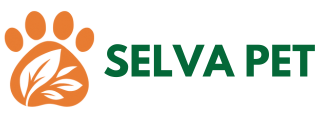Creating Do-It-Yourself Toys for Rodent friends can be a fun way to show your love! If you have a cute hamster, cheerful rat, or playful guinea pig, these toys will keep them happy and busy. In this article, you’ll discover exciting DIY ideas that are safe, fun, and eco-friendly! Let’s jump in and help your furry pals have a great time!
The Joy of Creating Do-It-Yourself Toys for Rodent Friends
Creating Do-It-Yourself Toys for Rodent friends brings an incredible sense of joy. Who doesn’t love seeing their pets light up with excitement? As a pet enthusiast and someone who has spent years observing and caring for these little furballs, I can tell you that the right toys can transform their environment. Not only do they keep them entertained, but they also stimulate their minds and bodies.
When I first started making toys for my pet rats, I was amazed at how simple materials could lead to such happiness. Whether it’s a cardboard tunnel or a woven grass ball, DIY toys offer endless possibilities. Plus, there’s something incredibly satisfying about crafting something with your own hands. You get to personalize it, ensuring it meets your pet’s needs and preferences.
So, let’s dive into the world of DIY rodent toys and explore how you can create them for your furry companions!
Why DIY Rodent Toys Are a Game Changer for Your Pets
DIY rodent toys are a game changer for multiple reasons. First off, they are cost-effective. Instead of spending a fortune on store-bought toys, you can use everyday items to create something special. I remember my first project was a simple cardboard box. I cut holes in it, and my rats had a blast exploring their new hideout.
Moreover, DIY toys allow you to customize them to suit your pet’s unique personality. For instance, some rodents love to chew, while others prefer to climb or tunnel. By making your own toys, you can cater to these preferences directly.
Another key advantage is that DIY toys are often safer than commercial options. Many store-bought toys can contain harmful chemicals or small parts that could pose a choking hazard. When you create your own toys, you have complete control over the materials used. Trust me, knowing what goes into your pet’s toys gives you peace of mind.
Lastly, making toys together can be a bonding experience. Involving your kids or family members in the process can create lasting memories. I often find myself laughing and chatting with my friends while crafting these little treasures.
Fun and Easy Homemade Rat Toys You Can Make Today
Let’s get into the fun part: making toys! Here are some easy homemade rat toys that you can whip up today.
1. Cardboard Tube Maze
Grab some toilet paper rolls or paper towel tubes. Cut them into various lengths and connect them together to create a maze. Rats love to explore, and this toy will keep them busy for hours.
2. Woven Grass Balls
You can easily make these by taking some dried grass or hay and rolling it into a ball. Secure it with a bit of twine. Rats will enjoy chewing and tossing these around.
3. Treat Dispenser
Take a plastic bottle and cut a few small holes in it. Fill it with your pet’s favorite treats, and let them figure out how to get to the goodies. It’s a great way to engage their minds!
4. Hanging Chew Toys
Use untreated wood sticks or branches and tie them together with twine. Hang them in their cage for a fun climbing and chewing experience.
5. Sock Puppet
Old socks can be transformed into cute puppets! Just fill them with crumpled paper and tie them off. Your rats will love snuggling and chewing on their new friend.
These toys are not just fun; they encourage exploration and problem-solving. Plus, you can create variations of these ideas based on what you have at home.
Safe Rodent Playthings: What You Need to Know
Safety is paramount when it comes to choosing or creating toys for your rodents. Here are some essential tips to ensure that your DIY creations are safe.
Avoid Toxic Materials
Always use non-toxic materials. For example, avoid using paints, glues, or any finishes that could be harmful. Instead, stick to natural items like untreated wood, cardboard, and fabric.
Check for Small Parts
If you’re making toys with multiple components, ensure that there are no small parts that could be chewed off and swallowed. Regularly inspect the toys for wear and tear, replacing them as necessary.
Supervise Playtime
While DIY toys can be safer, it’s still important to supervise your pets during playtime, especially when introducing a new toy. This way, you can ensure they’re engaging with it safely.
Know Your Pet
Each rodent has its own preferences and habits. For instance, some might be avid chewers while others prefer to climb. Understanding your pet’s behavior will help you create safer and more engaging toys.
Regular Maintenance
Keep an eye on the cleanliness of the toys. Rodents can be messy, and their toys can accumulate waste. Regularly clean and sanitize them to keep your pets healthy.
By keeping these safety tips in mind, you can enjoy peace of mind while your pets have a blast with their new toys!
Engaging DIY Hamster Toys That Will Keep Them Active
Hamsters are energetic little creatures, and they need toys that challenge their agility. Here are some engaging DIY toys specifically tailored for hamsters.
1. Hamster Wheel from a CD
Take an old CD and attach it to a sturdy base. You can create a simple wheel that your hamster can run on. Just ensure it spins freely and is securely attached.
2. Hide-and-Seek Box
Create a box with multiple compartments using cardboard. Hide treats in different sections to encourage your hamster to explore and forage.
3. Climbing Ramps
Use small wooden planks or cardboard to create ramps in their cage. Hamsters love to climb, and this will keep them active.
4. Tunnels and Burrows
Use PVC pipes or cardboard tubes to create a fun tunnel system. Hamsters enjoy burrowing, and this will give them a sense of security while they explore.
5. Chew Blocks
Cut untreated wood into small blocks for chewing. You can even sprinkle some herbs on them to make them more enticing.
These DIY toys for rodents not only keep them physically active but also mentally stimulated. Watching them explore and interact with these toys is incredibly rewarding!
Chewable Rodent Toys: Why They’re Essential for Health
Chewable toys are essential for the health of your rodents. Rodents have continuously growing teeth, and if they don’t have appropriate items to chew on, it can lead to dental issues. Here’s why chewable toys matter.
Dental Health
Chewing helps wear down their teeth naturally, preventing overgrowth. I’ve seen firsthand how a simple wooden block can make a huge difference in maintaining dental health for my pets.
Mental Stimulation
Chewing isn’t just about dental care; it also provides mental stimulation. When rodents chew, they engage in a natural behavior that helps reduce boredom.
Stress Relief
Chewing can be a great stress reliever for rodents. If they’re feeling anxious, having something to gnaw on can help soothe them.
Variety in Diet
Some chewable toys can be made from edible materials, providing an additional source of nutrients. For instance, you can use hay or herbal blends in your chew toys.
Creating Chewable Toys
When making chewable toys, consider using safe materials like untreated wood, cardboard, or even specific types of hay. Just be sure to avoid anything treated with chemicals.
By incorporating chewable toys into your rodent’s environment, you’re promoting their overall health and happiness!
Interactive Rodent Games: Boosting Your Pet’s Happiness
Interactive games are a fantastic way to boost your pet’s happiness. Here are some ideas to keep your rodents engaged and entertained.
1. Treasure Hunt
Hide treats around their cage or play area and encourage them to find them. This not only stimulates their natural foraging instincts but also keeps them active.
2. Obstacle Course
Set up an obstacle course using various items like tunnels, ramps, and boxes. Time them as they navigate through the course for an extra challenge!
3. Puzzle Feeders
Create puzzle feeders using cardboard boxes with holes. Place treats inside and let your rodents figure out how to get to them. It’s a fun way to engage their minds!
4. Tug-of-War
Using a strong piece of fabric, you can play a gentle game of tug-of-war with your pet. Just be sure to use a soft grip to avoid any injuries.
5. Social Play
If you have multiple rodents, encourage them to play together. They often enjoy chasing each other around, which promotes social interaction and bonding.
Interactive games not only provide physical exercise but also create a stimulating environment that enhances your pet’s well-being.
DIY Guinea Pig Activities: Keeping Your Cavy Entertained
Guinea pigs are social creatures that thrive on interaction and stimulation. Here are some DIY activities to keep your cavy entertained.
1. Foraging Boxes
Fill a box with shredded paper and hide treats within. Let your guinea pig dig through the box to find their rewards. It taps into their natural foraging instincts.
2. Hidey Houses
Create small hideouts using cardboard or wood. Guinea pigs love to have places to retreat and feel secure.
3. Grazing Mats
Use a flat piece of cardboard and scatter hay and veggies on it. This encourages your guinea pig to graze, mimicking their natural behavior.
4. DIY Tunnels
Make tunnels from cardboard tubes or fabric. Guinea pigs love to run through tunnels, and it adds an exciting element to their playtime.
5. Sensory Play
Incorporate different textures into their environment. Use materials like grass mats, fleece, or even crumpled paper to stimulate their senses.
By providing these engaging activities, you’ll ensure that your guinea pig stays happy and healthy.
Recyclable Pet Toys: Eco-Friendly Fun for Your Rodents
Creating recyclable pet toys is not only fun, but it also helps the environment. Here are some ideas for eco-friendly toys that your rodents will love.
1. Egg Cartons
Egg cartons can be transformed into fun toys. Cut them into sections and fill them with hay or treats for your pets to explore.
2. Paper Bags
Old paper bags can be crumpled up or filled with hay for your rodents to chew and play with. Just ensure they don’t have any plastic components.
3. Cardboard Boxes
Boxes from deliveries are perfect for creating hideouts or mazes. They’re sturdy, safe, and can be recycled after use.
4. Toilet Paper Rolls
These are perfect for making tunnels or chew toys. You can even stuff them with hay for added fun.
5. Old Clothes
If you have old, clean clothes, you can cut them into strips and create chew toys or hammocks for your rodents.
By using recyclable materials, you’re not only providing entertainment for your pets but also reducing waste. It’s a win-win!
Tips for Making Sustainable Pet Enrichment at Home
Creating sustainable pet enrichment doesn’t have to be complicated. Here are some tips to help you make the most of your DIY projects.
1. Plan Ahead
Think about what materials you have at home before starting a project. This will help you avoid unnecessary purchases and keep your costs down.
2. Get Creative
Don’t be afraid to think outside the box! Use items that might otherwise be discarded. Creativity can lead to some of the best toys.
3. Involve Your Pets
Let your pets explore and interact with the materials before you finalize a project. This way, you can tailor it to their preferences.
4. Keep It Simple
Sometimes the simplest toys are the most effective. A cardboard box or a simple rope can provide endless entertainment.
5. Regularly Rotate Toys
To keep your pets engaged, regularly rotate their toys. This keeps things fresh and exciting for them.
By following these tips, you can create a sustainable, enriching environment for your pets that will keep them happy and healthy.



